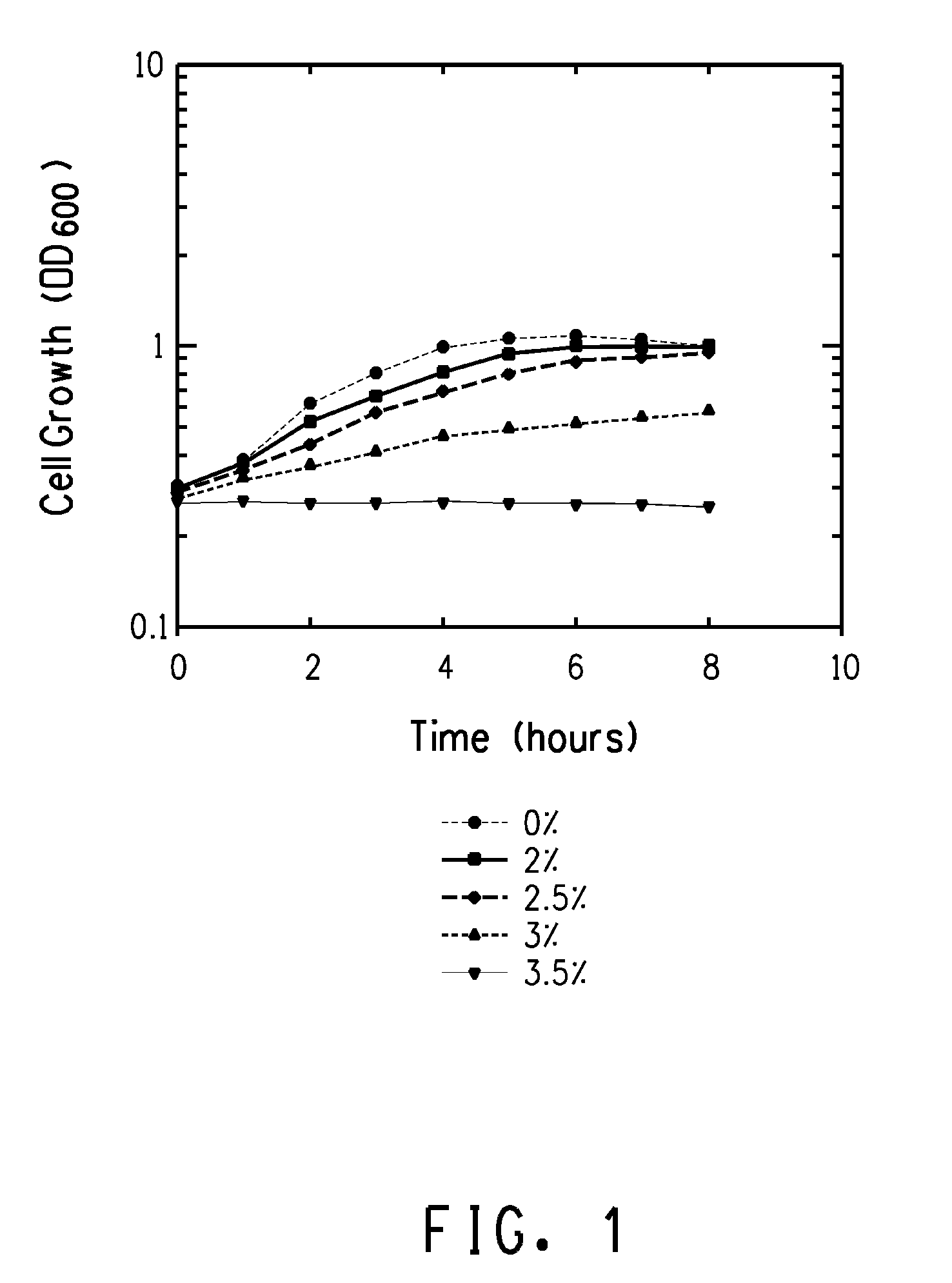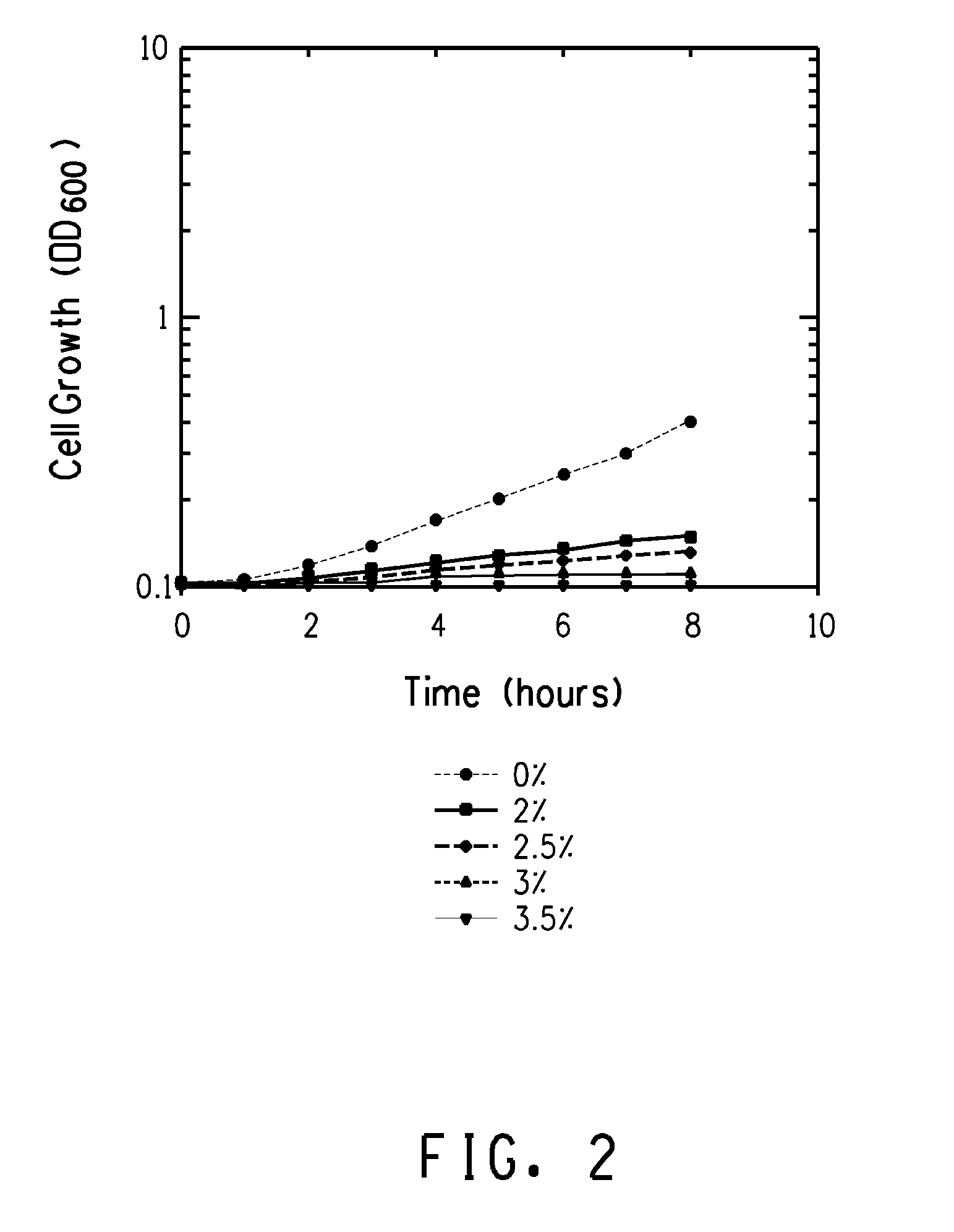Solvent tolerant microorganisms
a technology of microorganisms and solvents, applied in the field of industrial microorganisms, can solve the problems of petrochemical starting materials, general cost, and unenvironmental protection, and achieve the effects of reducing the number of toxic chemicals
- Summary
- Abstract
- Description
- Claims
- Application Information
AI Technical Summary
Benefits of technology
Problems solved by technology
Method used
Image
Examples
example 1
Identification of Butanol Tolerant Bacterial Strains in a Culture Collection
[0103]The purpose of this Example was to identify butanol tolerant bacteria that were present in a private culture collection that contained many different strains of lactic acid bacteria. Each member of the collection was tested for growth in media containing 1-butanol. Several 1-butanol tolerant bacterial strains were isolated and identified as Pediococcus pentosaceus or Pediococcus acidilactici.
[0104]A large culture collection containing lactic acid bacteria was stored at −70° C. in a set of square-well microtiter plates (Beckman Coulter Inc, Fullerton, Calif.; Catalog No. 069681), with each well containing a different bacterial strain. The culture collection was screened for 1-butanol tolerant bacteria on an agar medium as follows. The square-well microtiter plates were thawed at 25° C. The Nunc-TSP transferable solid phase screening system (Nalgene Nunc International, Napersville, Ill.; Catalog No. 445...
example 2
Tolerance of 1-Butanol Tolerant Pediococcus to Other Compounds
[0109]The purpose of this Example was to test the tolerance of a Pediococcus strain isolated based on tolerance to 1-butanol, to the additional compounds isobutanol, 2-butanol and 2-butanone.
[0110]The IC50 values of PN1011 were determined at 37° C., as follows. The strain was cultured in S30L medium (i.e., 10 mM ammonium sulfate, 5 mM potassium phosphate buffer, pH 7.0, 50 mM MOPS, pH 7.0, 2 mM MgCl2, 0.7 mM CaCl2, 50 μM MnCl2, 1 μM FeCl3, 1 μM ZnCl2, 1.72 μM CuCl2, 2.53 μM COCl2, 2.42 μM Na2MoO4, 2 μM thiamine hydrochloride, 0.01 M glucose, and 0.2% yeast extract) at 37° C. in the absence (control) and in the presence of various amounts of 1-butanol, isobutanol, 2-butanol or 2-butanone. The doubling time for each culture was calculated from the logarithmic part of the growth curve (doubling time=0.693 / growth rate). The percent growth inhibition caused by the butanol compound in the sample flasks was determined by subtrac...
PUM
| Property | Measurement | Unit |
|---|---|---|
| temperature | aaaaa | aaaaa |
| pH | aaaaa | aaaaa |
| pH | aaaaa | aaaaa |
Abstract
Description
Claims
Application Information
 Login to View More
Login to View More - R&D
- Intellectual Property
- Life Sciences
- Materials
- Tech Scout
- Unparalleled Data Quality
- Higher Quality Content
- 60% Fewer Hallucinations
Browse by: Latest US Patents, China's latest patents, Technical Efficacy Thesaurus, Application Domain, Technology Topic, Popular Technical Reports.
© 2025 PatSnap. All rights reserved.Legal|Privacy policy|Modern Slavery Act Transparency Statement|Sitemap|About US| Contact US: help@patsnap.com


